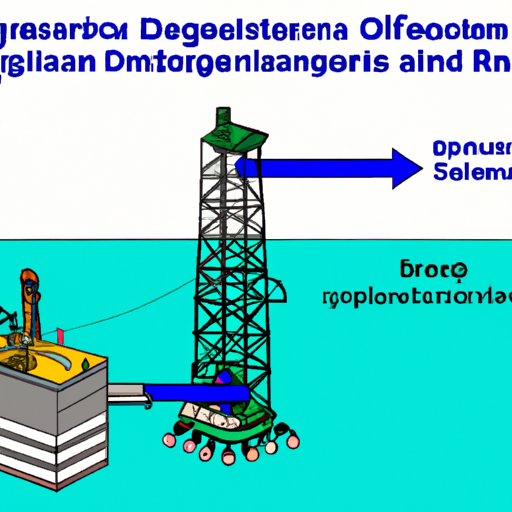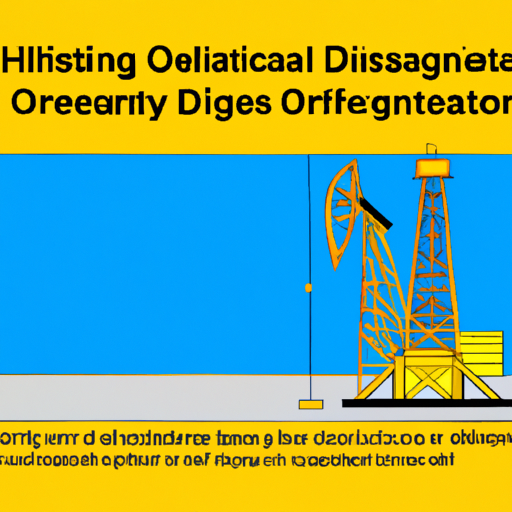Enhancing Safety and Efficiency in Offshore Operations with Oil Rig Elevators

Introduction:
The offshore oil and gas industry operates under demanding conditions, where safety and efficiency are paramount. Among the various equipment and technologies that contribute to the smooth operation of oil rigs, oil rig elevators play a crucial role. These specialized elevators are designed to transport personnel, equipment, and supplies between different levels of offshore platforms, ensuring a safe and efficient workflow. In this article, we will explore the significance of oil rig elevators, their types, functionalities, safety features, and the latest advancements in this essential equipment.
1. Understanding Oil Rig Elevators:
Oil rig elevators, also known as offshore platform elevators, are specifically designed to facilitate vertical transportation on offshore rigs. These elevators are built to withstand the harsh marine environment and accommodate heavy loads, ensuring the safe movement of personnel and equipment between various levels of the rig. They play a vital role in enhancing operational efficiency, reducing downtime, and improving overall safety on oil rigs.
2. Types of Oil Rig Elevators:
a. Personnel Elevators:
Personnel elevators are primarily designed for the safe transportation of workers from one level to another. These elevators are equipped with advanced safety features such as emergency stop buttons, interlocks, and backup power systems to ensure the well-being of personnel during emergencies. They are designed to carry a limited number of passengers and are built with sturdy materials to withstand offshore conditions.
b. Material and Equipment Elevators:
Material and equipment elevators are specifically designed to transport heavy machinery, tools, and supplies between different levels of the rig. These elevators are capable of carrying substantial loads and are equipped with advanced lifting mechanisms to ensure smooth and efficient transportation. They are essential for maintaining a steady supply chain and facilitating seamless operations on offshore platforms.
3. Safety Features and Regulations:
Safety is of utmost importance in the offshore industry. Oil rig elevators are designed and operated in compliance with stringent safety regulations to ensure the well-being of personnel and the prevention of accidents. Some key safety features include:
a. Emergency Stop and Interlock Systems:

Oil rig elevators are equipped with emergency stop buttons strategically placed to allow immediate halting of the elevator in case of an emergency. Interlock systems prevent unauthorized access and ensure that the elevator doors cannot be opened while the elevator is in motion.
b. Backup Power Systems:
To mitigate the risk of power failures, oil rig elevators are equipped with backup power systems, such as generators or battery backups. These systems ensure that elevators can function even during power outages, enabling safe evacuation or movement of personnel and equipment.
c. Fire and Explosion Protection:
Oil rig elevators are designed to withstand fire and explosion hazards. They are equipped with fire-resistant materials, ventilation systems, and explosion-proof features to minimize the risk of accidents and protect personnel in case of emergencies.
d. Regular Inspections and Maintenance:
To ensure the continued safe operation of oil rig elevators, regular inspections and maintenance are essential. Qualified personnel conduct thorough inspections, testing the functionality of safety features and identifying any potential issues that may compromise the elevator's performance.
4. Advancements in Oil Rig Elevators:
With constant technological advancements, oil rig elevators continue to evolve to meet the increasing demands of the offshore industry. Some notable advancements include:
a. Enhanced Communication Systems:
Modern oil rig elevators are equipped with advanced communication systems, such as intercoms or wireless connectivity, enabling constant communication between personnel inside the elevator and those on different levels of the rig. This facilitates efficient coordination during emergency situations and enhances overall safety.
b. Remote Monitoring and Control:
The integration of remote monitoring and control systems allows operators to monitor the performance and condition of oil rig elevators from a central location. Real-time data and analytics enable predictive maintenance, minimizing downtime and ensuring optimal performance.
c. Intelligent Elevator Control Systems:
Intelligent elevator control systems utilize artificial intelligence and automation to optimize elevator operations. These systems analyze passenger traffic, adjust elevator movement patterns, and predict maintenance requirements, ultimately improving efficiency and reducing energy consumption.
Conclusion:
Oil rig elevators are essential components of offshore platforms, providing safe and efficient vertical transportation for personnel, equipment, and supplies. With the advancement of technology, these elevators continue to evolve, integrating advanced safety features, communication systems, and intelligent control mechanisms. The offshore industry relies on the reliable performance of oil rig elevators to enhance safety, minimize downtime, and maximize operational efficiency. As offshore operations continue to expand, the development of innovative elevator systems will play a significant role in meeting the industry's evolving needs.




 8613371530291
8613371530291